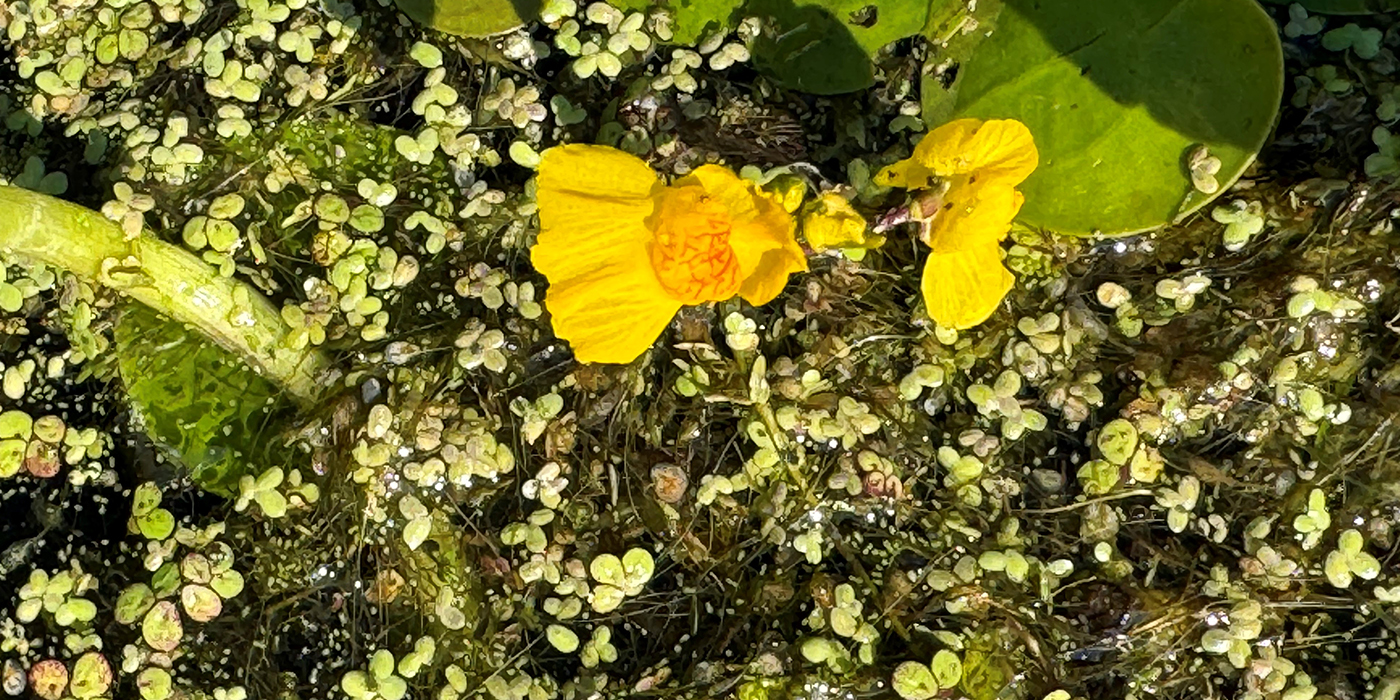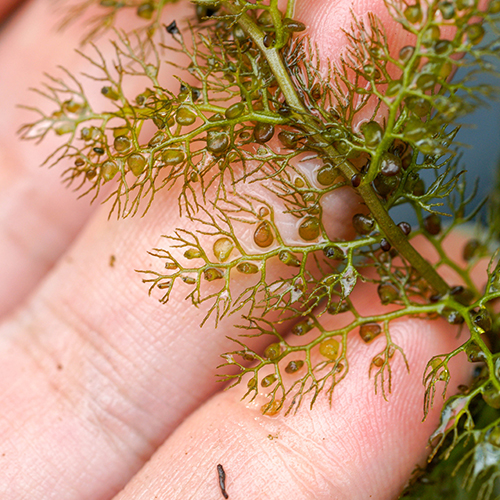Predacious Portals

By: Karen Menard
You can’t always judge a plant by its flowers. Outward appearances don’t always match what dwells below the surface.
Wearing waders in the watery recesses of Howard Marsh this summer, I came face to face with a cluster of unique floating blooms. Quickly lured in by their wholesome beauty reflecting upon the water, little did I know that their hidden truths were buoyed in the murky depths.
Innocently dangling below, hundreds of small, bladder-like traps in tow, specifically designed for efficient carnivory, revealed the common bladderwort’s (Utricularia vulgaris) deepest secrets. In a flash, these masterful, yet mortal, machines were found to be capable of snapping up any tiny insect, mite, algae, diatom, nematode and gastropod that maneuvered too close.
Obscure “trigger” hairs resembling antennae automatically spring the plant’s trap door open, and snap it shut with lightning speed in about 10-20 milliseconds. The bladders serve as lethal portals, sucking in both water and the organism through an aquatic vacuum.
Like underwater captives, pulled through a dark gateway of no return, the creatures are defenseless in the subaqueous shadows of these amazing plants. Once subdued, they are immediately thrust into a special bladder microbiome. In this sunken space, like buried treasure, they are met by a variety of other valuable microorganisms that all work together to perform life-sustaining processes.
These gems of nature, however, tiny, work in harmony within this rich community. Bacteria that produces enzymes is also at home here, mainly responsible for digesting tough plant tissues. In fact, they reside alongside species that specialize in the process of anaerobic fermentation (similar to species found in cattle guts) and other enzymes capable of digesting animal matter. Microbial predators called protists actively thrive as part of each, unique microcosm, responsible for releasing and cycling nutrients for use by the plant itself. All in all, each mentioned here has a special job to do in order to keep the bladderwort’s lifecycle afloat and marsh biodiversity high.

All of these coordinated, biological processes that occur below the beautiful yellow and orange blooms continually support life above the water as well. Insect pollinators, waterfowl and beavers will routinely visit this plant for food.
Photos: Bladderwort flower, Jay Wright; Bladderwort “bladders,” stock photo.
---
Did You Know?
This plant’s trapping mechanism performs 100 times faster than a Venus flytrap’s reaction time.